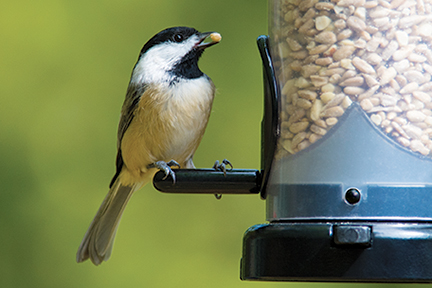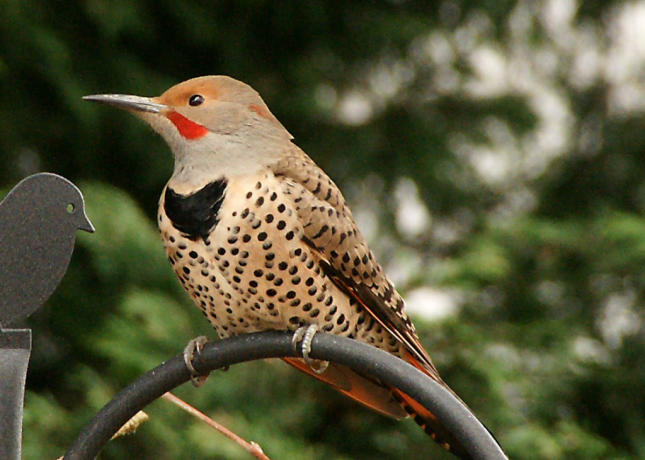Image courtesy of Project FeederWatch
BIRD OF THE MONTH: NORTHERN FLICKER
The Northern Flicker is a large woodpecker with beautiful black-scalloped plumage. It has a black V-mark on its breast and the male has a red "mustache".
The Northern Flicker is often found on the ground foraging for ants and beetles. In fact, it spends about seventy-five per cent of its time doing this. Flickers will disturb ant hills to eat the ants or insert their long, barbed sticky tongues into ant burrows.
When the red-shafted Northern Flicker flies, which is the bird we have here in the west, you'll see a flash of brilliant red-orange color under the wings and tail and bright white on the rump. When the eastern bird, the yellow-shafted Northern Flicker flies, it displays a beautifull sunshine yellow under its wings and tail.
The Northern Flicker is one of the few North American woodpeckers that is strongly migratory. Flickers in the northern part of the range move south for the winter while a few often stay far north.
Flickers generally nest in holes in trees and sometimes will use the previous year's nesting cavity. Occasionally, they can be found in old, earthen burrows formerly used by Belted Kingfishers or Bank Swallows. They will use a nesting box fixed to a pole among shrubs.
The Northern Flicker nests from March until June usually having one brood. The female will lay five to ten white eggs and both parents will help with incubation, the male sitting on the eggs during the night. The eggs will hatch in eleven to twelve days and the chicks will fledge in twenty-three days.
There are over a hundred common names for the Northern Flicker including yellowhammer, clape, gaffer woodpecker, harrywicket, heigh-ho, wake-up, walk-up, wick-up, yarrup and gawker bird.
The oldest red-shafted Northern Flicker lived to be eight years, nine months old.
The Northern Flicker will drum on objects as a form of communication and territory defense. It tries to make the loudest noise possible and that's why it will drum on metal. One flicker in Wyoming was drumming on a tractor and could be heard a half mile away!
At times this drumming behavior can be problematic. If a Northern Flicker is drumming on your house or property, listed below are several things you can do to try and deter it.
- hang foil strips or reflective tape long enough to hang freely and blow in the breeze
- hang CD's on fishing line same as above
- hang up windsocks
- put up scare-eye balloons
- put up terror-eye balloons from Bird-X Co. These bounce from a spring and the holographic eyes appear to follow the bird
- put up attack spiders. These are battery operated motion detecting spiders that drop down when a bird comes near
- use a sound deterrent. The Bird-XPellent Pro produces a woodpecker distress call followed by the call of a predator such as a hawk
- mount a movement detector that makes noise
-attach nylon or plastic netting from the eave to the siding leaving at least three inches between the net and siding
- put up aluminum flashing to cover where the drumming is occuring or to protect the siding
- put up a nesting box where the drumming is occuring
- put up a suet feeder which may distract the bird
We hope some of this information is helpful to you!


